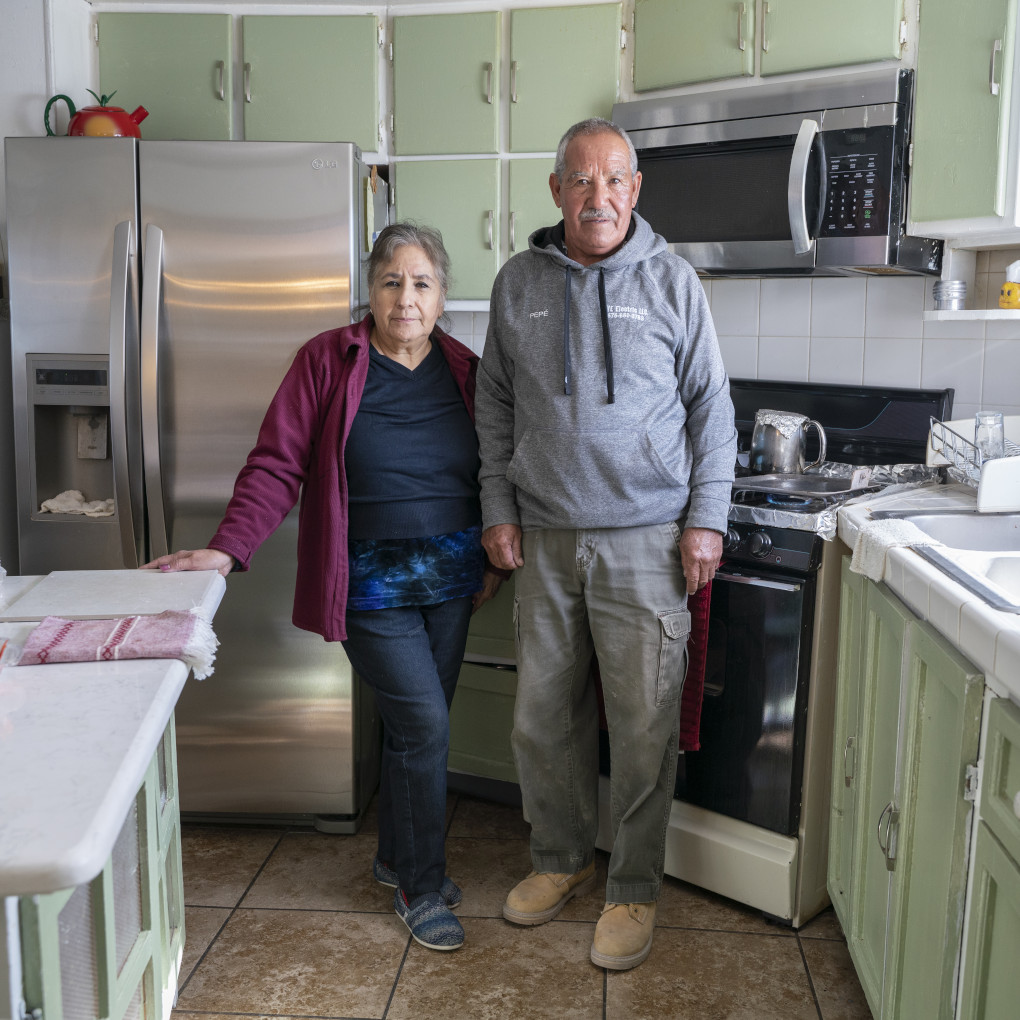Jose Luis Frias, 69, and his wife Maria, 68, came to the United States in 1986. Jose worked as a debt collector in Ciudad Juarez before he and Maria moved to New Mexico. Back in those days, Juarez was a different place, and Frias would walk the streets collecting cash from borrowers without worrying about being robbed. Back when they lived in Juarez, it was a much safer, however shortly after, Juarez entered a period of increased violence and crime. “Back then we would sleep outside when it was hot,” he said, in comparison to present day, when most people would not leave their doors unlocked when they are at home.
Maria worked in a Maquiladora in the early 80s: “I thank God that I came here, because my girls were so young,” she said.
“We came because all of her family lived here,” he said. The extended family of Maria lived together on a large lot in Dona Ana, just north of Las Cruces. Jose and Maria brought their four children who are all now, grown up.
“In that time there was the amnesty,” he said about choosing to immigrate to New Mexico. For them, immigration wasn’t like it is today for other migrants trying to enter the United States. In fact, traffic between Ciudad Juarez and El Paso was much simpler. Mexican citizens only required a crossing card to enter El Paso. Jose said things started to change after President Bill Clinton left office in 2001.
Jose worked for an electrical contracting business, until he eventually started his own. Now retired, he still has his contractors do jobs around the area. Mr. Frias is a naturalized US Citizen.
Jose Luis Frias, 69, y su esposa Maria, 68, llegaron a los Estado Unidos en 1986. José trabajaba como cobrador en Ciudad Juárez antes de mudarse a Nuevo México. En esos tiempos, Juárez era un lugar diferente, y Frías andaba por las calles desempeñando su trabajo como cobrador a los prestatarios sin preocupación de ser robado. En esos tiempos cuando vivían en Juárez, era mucho más seguro, sin embargo poco después, Juarez entró en un periodo de aumento en crimen y violencia. “En aquellos tiempos nos dormiamos afuera cuando hacía calor,” dijo el, a comparación al dia presente, que la mayoría de personas no dejan sus puertas sin cerrar con llevas, cuando están en casa.
Maria trabajaba en una Maquiladora al principio de los 80’s. “Le doy gracias a Dios que llegamos aquí, porque mis hijas eran muy pequeñas,” dijo ella.
“Nos venimos porque toda su familia vive aquí.” dijo el. Los familiares de María vivian juntos en un terreno grande en Doña Ana, al norte de Las Cruces. José y María llegaron con sus cuatro hijos, que ahora ya son adultos.
“En ese tiempo estaba la amnistía,” dijo él cuando decidió migrar a Nuevo México. Para ellos, inmigración no era como es ahora, para otros migrantes intentando cruzar a Estado Unidos. De hecho, el tráfico entre Ciudad Juárez y El Paso era mucho más fácil. Los ciudadanos Mexicanos solo necesitaban una visa para entrar al El Paso. Jose dijo que las cosas empezaron a cambiar cuando Bill Clinton deja la presidencia en 2001.
José trabajaba para una compañía de servicios de electricidad hasta que eventualmente formó su propia compañía. Ahora ya retirado, todavía tiene trabajadores que proveen servicios en las áreas cercanas. El Sr. Frías es un Ciudadano de los Estado Unidos, naturalizado
The Faces of Immigration Project is a 40 Day photo journal series used to highlight the stories of all Immigrants. The project is meant to shed light on some of the many reasons people have for immigrating to the U.S. Statements and stories have been edited for content, clarity, and brevity and may not reflect the entirety of an Immigrant’s reasons for immigrating to the United States.
By Paul Ratje

